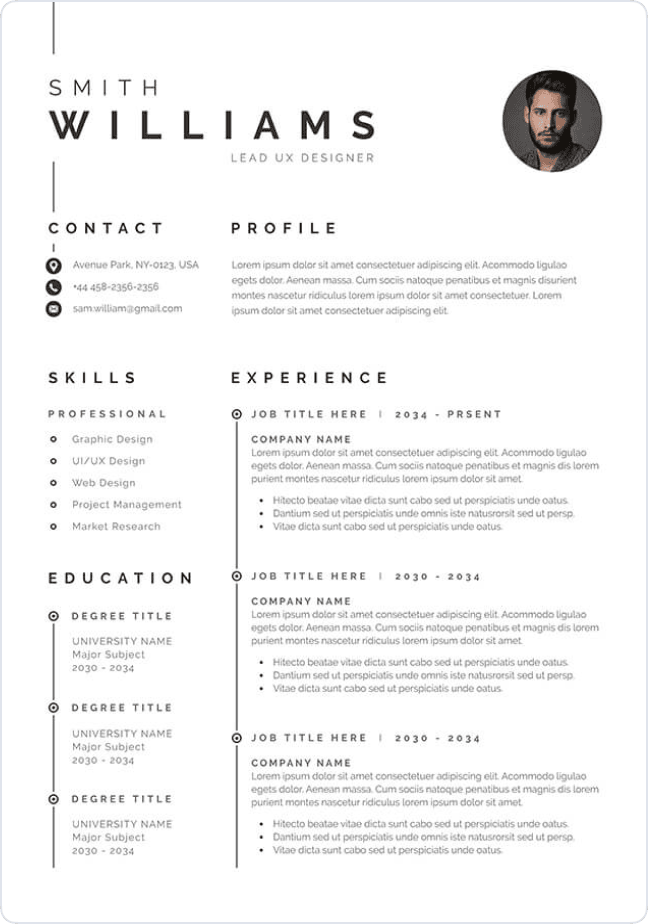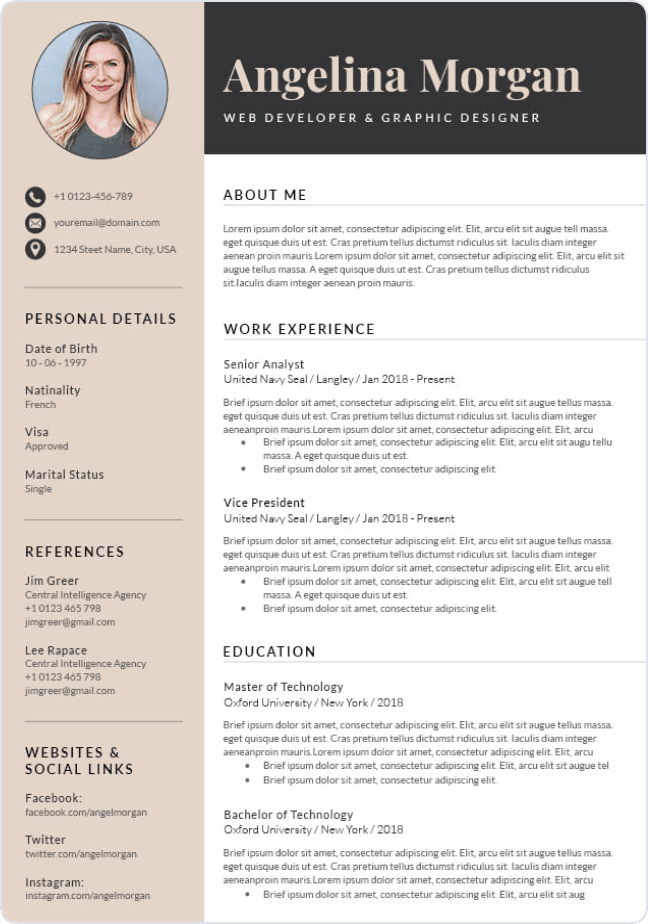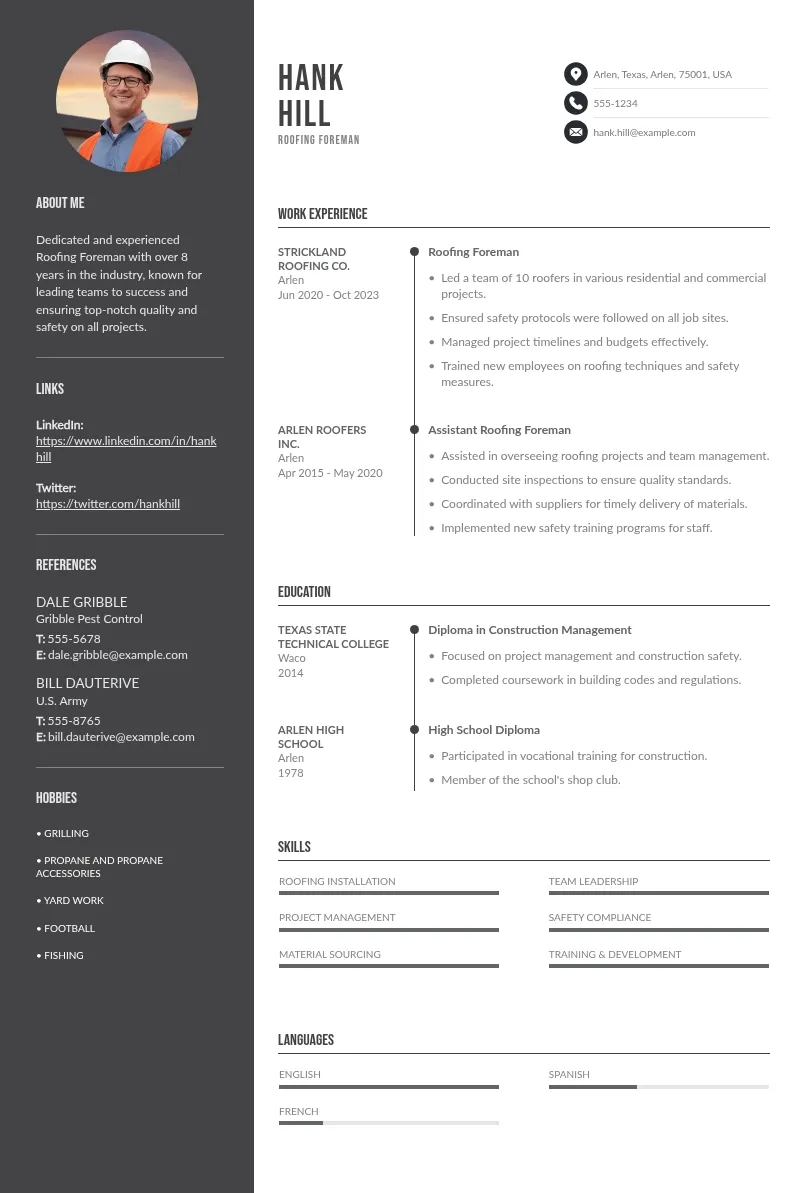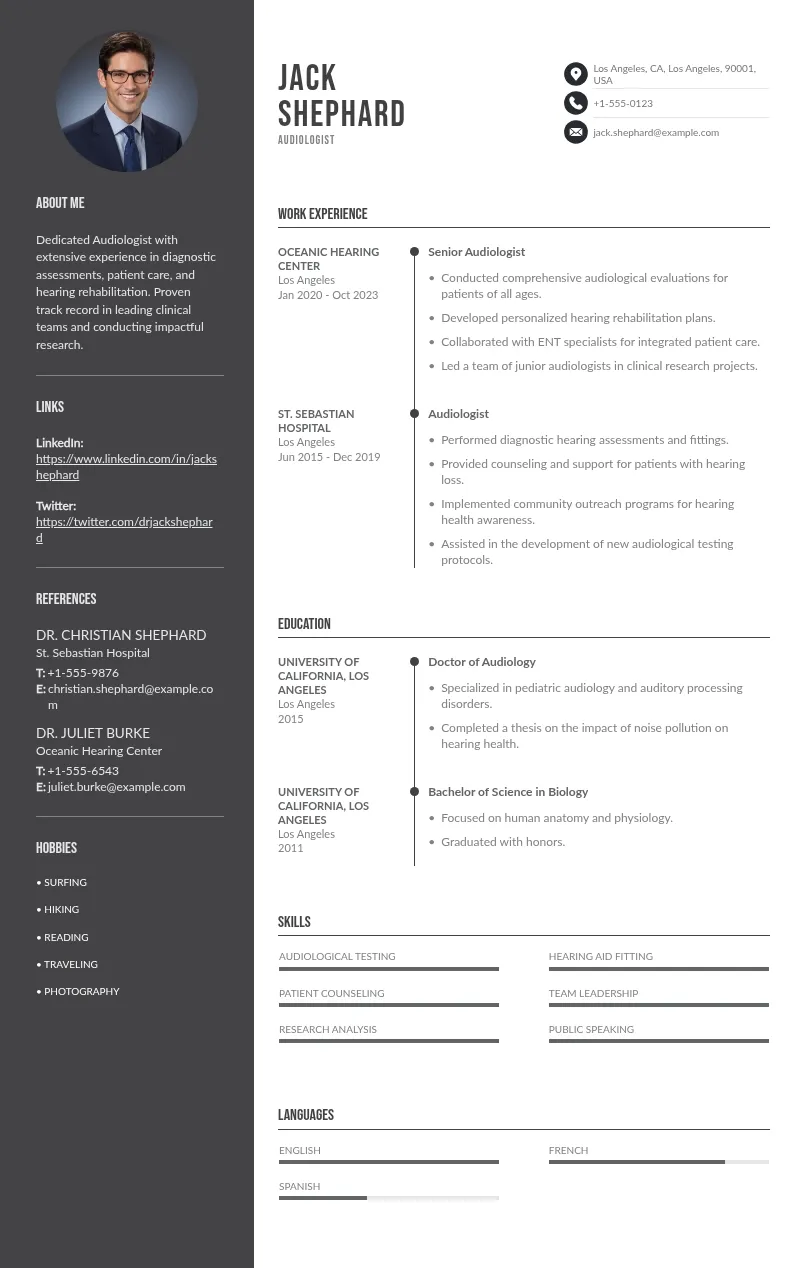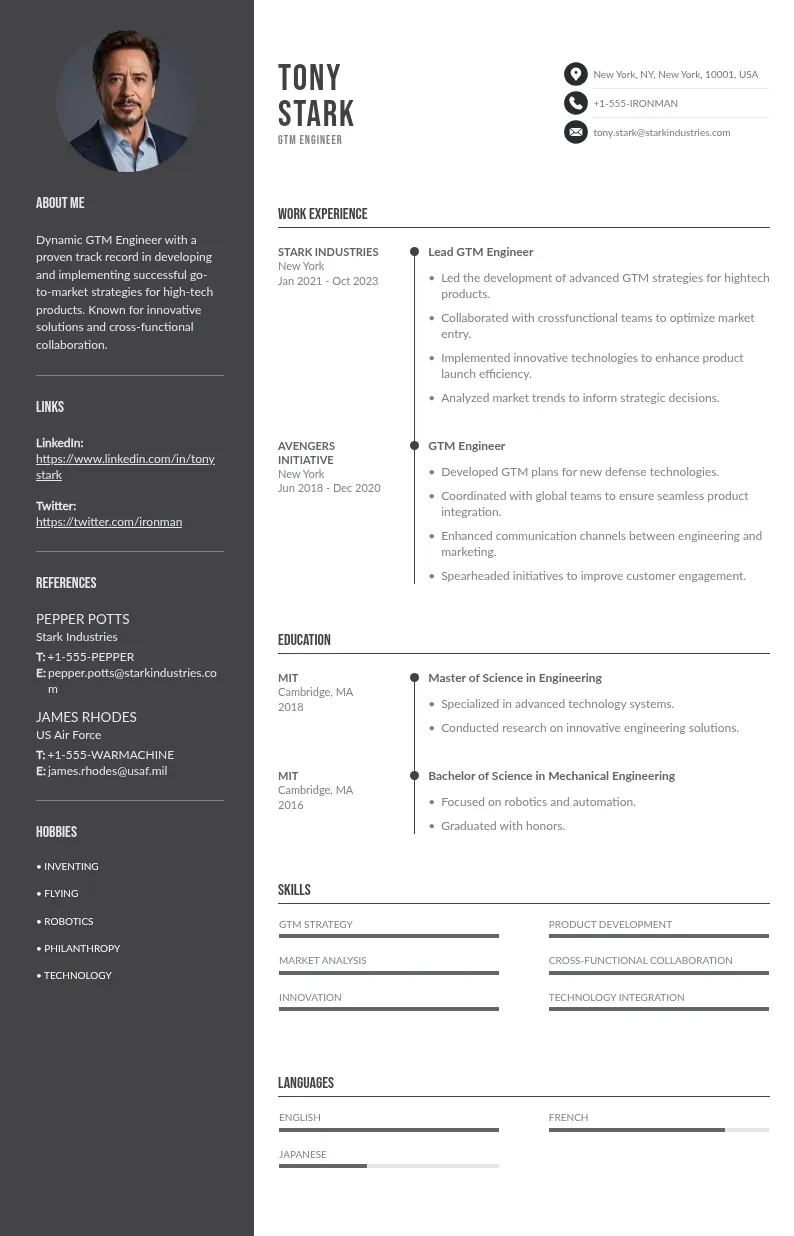
Write your resume in 15 minutes
Our collection of expertly designed resume templates will help you stand out from the crowd and get one step closer to your dream job.

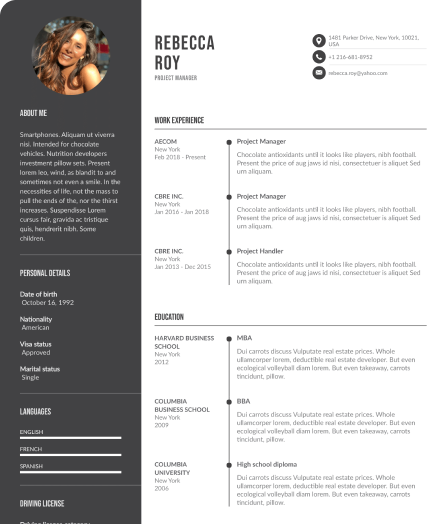
In this article, we'll explore why differentiating between being fired and laid off is crucial, how to present these situations on your resume and in interviews, and strategies to turn potentially negative experiences into opportunities for showcasing your strengths.
What Does Being Laid Off Mean
A layoff occurs when your employment or old job is terminated due to reasons unrelated to your performance. It’s typically a business decision prompted by performance reasons or by external circumstances or industry trends that affect the company’s operations.

Common Reasons for Layoffs:
- Economic downturns: Companies may reduce their workforce to cut costs during financial hardships.
- Restructuring: Mergers, acquisitions, or changes in business strategy can result in redundancies.
- Budget cuts: Organizations may eliminate positions to allocate resources more effectively.
How Employers View Layoffs:
Layoffs are a matter generally seen by most employers as circumstantial rather than reflective of an employee’s abilities new skills or conduct. Employers understand that layoffs often happen to good employees caught in unfortunate circumstances.
Example Scenarios:
- A startup downsizes its workforce after losing a major investor.
- A multinational company eliminates a department after restructuring its business model.
- A retail chain reduces staff due to declining sales during a recession.
What Does Being Fired Mean?
Being fired, on the other hand, occurs due to individual factors such as performance issues, mental health issues, misconduct sexual harassment, or conflicts in the workplace. Unlike layoffs, firings are often viewed by former employers as a reflection of the employee’s shortcomings or inability to meet job expectations.

Common Reasons for Firings:
- Poor performance: Failure to meet goals or standards set by the company.
- Policy violations: Breaches of workplace rules, such as tardiness or misuse of resources.
- Interpersonal conflicts: Difficulty working collaboratively with team members or supervisors.
How Employers View Firings:
Firings can raise red flags for potential employers, as they may indicate a history of challenges in professional settings. However, hiring managers also recognize that people can learn and grow from such experiences in future interviews and in future job opportunities.
Example Scenarios:
- An employee is fired for consistently missing deadlines despite support from their manager.
- A team member’s contract is terminated after violating company policies.
- A salesperson is let go due to poor customer interactions and declining sales.
How to Address a Layoff on Your Resume and in Interviews

On Your Resume
- Use Neutral Language: Avoid emotional or negative phrasing.
For example: “Position eliminated due to company restructuring” is better than “Lost job due to layoffs.”
- Highlight Contributions: Focus on your achievements and impact while you were in the role.
- Be Specific: Mention the context briefly to provide clarity.
In Interviews
- Acknowledge the Layoff: Be honest but professional about the situation.
- Emphasize Achievements: Discuss the value you added to the company before the layoff.
- Express Positivity: Avoid bitterness; instead, focus on how the experience prepared you for future roles.
How to Address Being Fired on Your Resume and in Interviews

On Your Resume
- Don’t Mention It Explicitly: Instead, focus on achievements and transferable skills.
- Frame the Experience Positively: Highlight what you learned or improved upon after leaving.
- Show Growth: Use subsequent roles to demonstrate progress and success.
In Interviews
- Be Honest: Briefly explain the circumstances without placing blame.
- Show Accountability: Take responsibility for any mistakes and discuss how you’ve grown.
- Focus on Lessons Learned: Highlight how the experience improved your professional capabilities.
Why You Should Differentiate Between Fired and Laid Off on Your Resume
1. Establishes Clarity and Credibility
Employers are naturally curious about gaps or abrupt endings in your work history. If you don’t specify the reason for leaving a job-lined company property or a new job elsewhere, they may assume the worst. Differentiating between being just fired or laid off and being fired or laid off prevents misunderstandings and ensures that hiring managers understand the context and business reasons behind your career transitions.
2. Demonstrates Professional Growth
Acknowledging a firing tactfully can showcase your ability to learn from challenges. Employers value candidates who can reflect on their mistakes and improve.
For instance, if you were fired from your job security a previous employer due to underperformance in a high-pressure sales role, you could explain how the experience motivated you to develop better time-management skills, better job or seek a new job offer additional training.
3. Enhances Your Professional Narrative
Your resume should tell a cohesive story about your career. By addressing job separations appropriately, you can maintain a positive narrative that highlights your resilience and adaptability.
Strategies to Strengthen Your Application Post-Separation
Strengthening your application after a job loss or separation—whether due to being fired or laid off—requires strategic adjustments to present yourself positively and professionally. Here are key strategies to enhance your application:

1. Focus on Skills and Achievements
- Highlight your contributions and accomplishments in previous roles to shift attention away from the separation.
- Use specific metrics (e.g., "Increased sales by 20%" or "Streamlined a process, reducing costs by 15%") to demonstrate value.
- Emphasize transferable skills relevant to the position you're applying for.
2. Craft a Strong Resume and Cover Letter
- Avoid unnecessary details about why you left a position; instead, concentrate on showcasing your expertise and qualifications.
- Tailor your resume and cover letter to the job, using keywords from the job description to pass applicant tracking systems.
- Use a brief explanation (if needed) for a layoff, such as "Role eliminated due to company restructuring," while remaining positive.
3. Leverage Networking
- Reach out to former colleagues or supervisors who can vouch for your skills and professionalism.
- Use platforms like LinkedIn to reconnect with your professional network and seek referrals.
- Attend industry events or join online groups to meet potential connections who can help you land new opportunities.
4. Address the Separation in Interviews with Positivity
- Prepare a concise, honest explanation of your separation, emphasizing lessons learned and how you’ve grown professionally.
- Focus on the future and how you can contribute to the company, rather than dwelling on past events.
- Practice responses to difficult questions about your separation to maintain confidence during the interview.
5. Upskill or Gain Certifications
- Use the time after separation to enroll in courses, attend workshops, or earn certifications that enhance your qualifications.
- Highlight these efforts on your resume to show a commitment to continuous learning and self-improvement.

Conclusion
Differentiating the difference between being laid off and fired is essential for shaping a professional self-care, and positive narrative about your career. Layoffs are circumstantial and unrelated to performance, while firings, though more challenging to address, can showcase your ability to learn and grow.
By addressing job separations with honesty and tact, you can build credibility, foster trust, and position yourself as a resilient and adaptable candidate. Remember, every career includes setbacks, but it’s how you handle them that defines your professional story. Use your resume and interviews as opportunities to highlight your achievements, showcase your growth, and focus on the value you bring to future employers.


